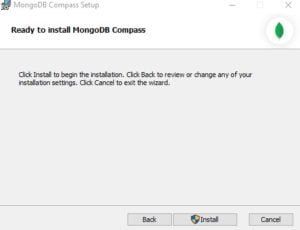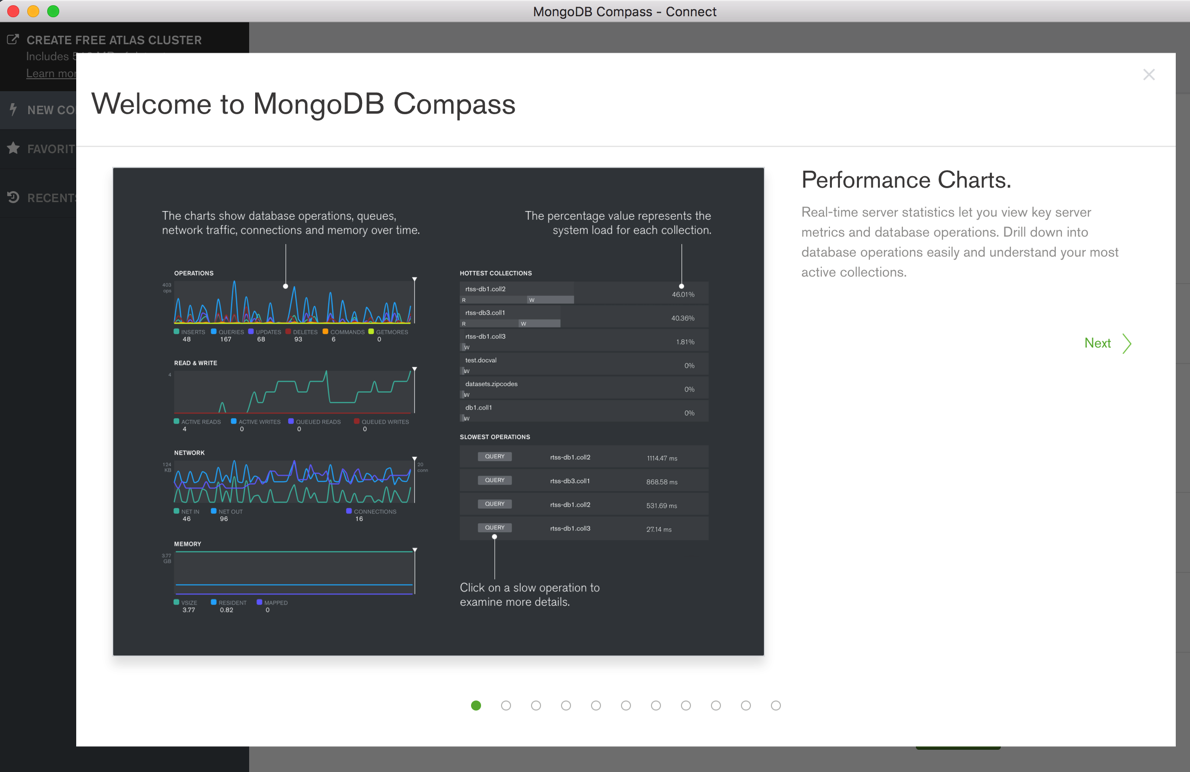

MongoDB supports fixed-size collections called capped collections.

JavaScript can be used in queries, aggregation functions (such as MapReduce), and sent directly to the database to be executed. The aggregation framework includes the $lookup operator which can join documents from multiple collections, as well as statistical operators such as standard deviation. Aggregation operators can be strung together to form a pipeline – analogous to Unix pipes. The aggregation framework enables users to obtain the kind of results for which the SQL GROUP BY clause is used. But according to MongoDB's documentation, the Aggregation Pipeline provides better performance for most aggregation operations. Map-reduce can be used for batch processing of data and aggregation operations. MongoDB provides three ways to perform aggregation: the aggregation pipeline, the map-reduce function, and single-purpose aggregation methods. GridFS divides a file into parts, or chunks, and stores each of those chunks as a separate document. GridFS can be accessed using mongofiles utility or plugins for Nginx and lighttpd. MongoDB exposes functions for file manipulation and content to developers. This function, called grid file system, is included with MongoDB drivers. MongoDB can be used as a file system, called GridFS, with load balancing and data replication features over multiple machines for storing files. MongoDB can run over multiple servers, balancing the load or duplicating data to keep the system up and running in case of hardware failure. (A shard is a master with one or more replicas.) Alternatively, the shard key can be hashed to map to a shard–enabling an even data distribution. The data is split into ranges (based on the shard key) and distributed across multiple shards. The user chooses a shard key, which determines how the data in a collection will be distributed. MongoDB scales horizontally using sharding. As a consequence, an idealized distributed MongoDB deployment requires at least three separate servers, even in the case of just one primary and one secondary. It has a single responsibility, which is to resolve the election of the new primary. If the replicated MongoDB deployment only has a single secondary member, a separate daemon called an arbiter must be added to the set. Secondaries can optionally serve read operations, but that data is only eventually consistent by default. When a primary replica fails, the replica set automatically conducts an election process to determine which secondary should become the primary. Secondary replicas maintain a copy of the data of the primary using built-in replication. All writes and reads are done on the primary replica by default. Each replica-set member may act in the role of primary or secondary replica at any time. A replica set consists of two or more copies of the data. MongoDB provides high availability with replica sets. Queries can also be configured to return a random sample of results of a given size.įields in a MongoDB document can be indexed with primary and secondary indices or index. Queries can return specific fields of documents and also include user-defined JavaScript functions. MongoDB supports field, range query, and regular-expression searches. Customers can use the managed offering from BABA's global data centers. On October 30, 2019, MongoDB teamed up with Alibaba Cloud, who will offer its customers a MongoDB-as-a-service solution.
MONGODB COMPASS DATE GREATER THAN LICENSE
On Novemwith the stable release 4.0.4 the software's license changed from AGPL 3.0 to SSPL. On October 20, 2017, MongoDB became a publicly traded company, listed on NASDAQ as MDB with an IPO price of $24 per share. In 2013, 10gen changed its name to MongoDB Inc. In 2009, the company shifted to an open-source development model, with the company offering commercial support and other services.
MONGODB COMPASS DATE GREATER THAN SOFTWARE
The US software company 10gen began developing MongoDB in 2007 as a component of a planned platform as a service product.


 0 kommentar(er)
0 kommentar(er)
